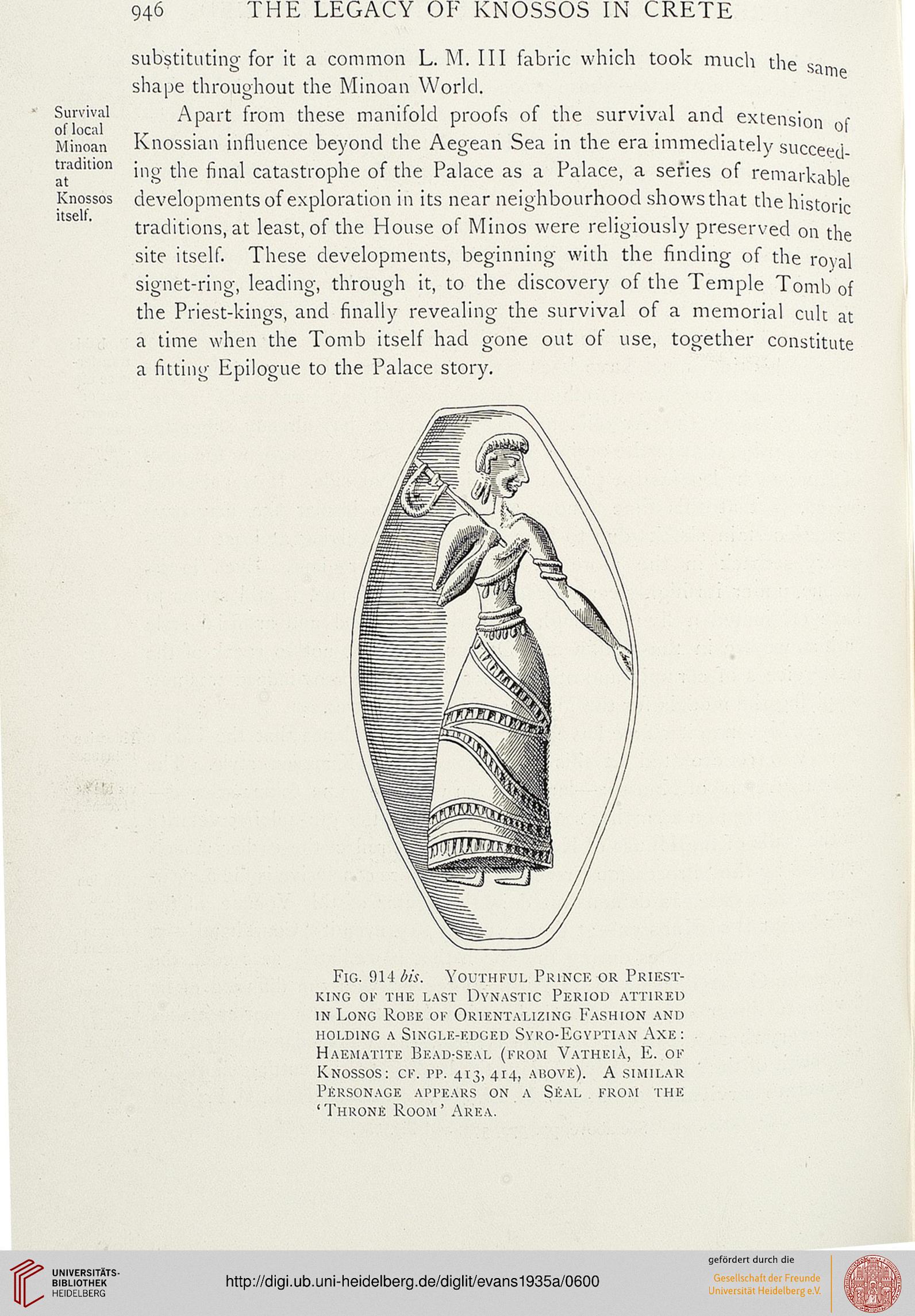946 THE LEGACY OF KNOSSOS IN CRETE
substituting for it a common L. M. Ill fabric which took much the sa
shape throughout the Minoan World.
Survival Apart from these manifold proofs of the survival and extension if
Minoan Knossian influence beyond the Aegean Sea in the era immediately succeed
tradition jn„. tne jjngj catastrophe of the Palace as a Palace, a series of remarkable
Knossos developments of exploration in its near neighbourhood shows that the historic
traditions, at least, of the House of Minos were religiously preserved on the
site itself. These developments, beginning with the finding of the royal
signet-ring, leading, through it, to the discovery of the Temple Tomb of
the Priest-kings, and finally revealing the survival of a memorial cult at
a time when the Tomb itself had gone out of use, together constitute
a fitting Epilogue to the Palace story.
Fig. 914 Us. Youthful Prince or Priest-
king OK THE LAST DYNASTIC PERIOD ATTIRED
in Long Uobe or Orientalizing Fashion and
holding a Single-edged Svro-Egyrtian Axe:
Haematite Bead-seal (from Vatheia, E. of
Knossos: cf. pp. 413, 414, above). A similar
Personage appears on a Seal from the
'Throne Room' Area.
substituting for it a common L. M. Ill fabric which took much the sa
shape throughout the Minoan World.
Survival Apart from these manifold proofs of the survival and extension if
Minoan Knossian influence beyond the Aegean Sea in the era immediately succeed
tradition jn„. tne jjngj catastrophe of the Palace as a Palace, a series of remarkable
Knossos developments of exploration in its near neighbourhood shows that the historic
traditions, at least, of the House of Minos were religiously preserved on the
site itself. These developments, beginning with the finding of the royal
signet-ring, leading, through it, to the discovery of the Temple Tomb of
the Priest-kings, and finally revealing the survival of a memorial cult at
a time when the Tomb itself had gone out of use, together constitute
a fitting Epilogue to the Palace story.
Fig. 914 Us. Youthful Prince or Priest-
king OK THE LAST DYNASTIC PERIOD ATTIRED
in Long Uobe or Orientalizing Fashion and
holding a Single-edged Svro-Egyrtian Axe:
Haematite Bead-seal (from Vatheia, E. of
Knossos: cf. pp. 413, 414, above). A similar
Personage appears on a Seal from the
'Throne Room' Area.





